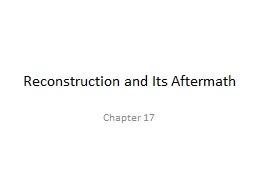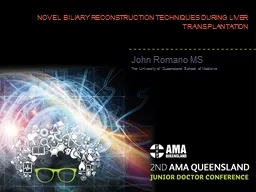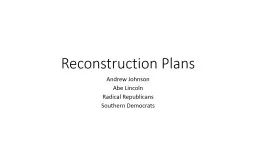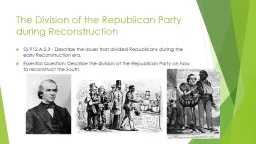PPT-RECONSTRUCTION Chapter 2
Author : luanne-stotts | Published Date : 2018-11-09
Lesson 1 18651877 Main Ideas President Lincoln and Congress differed in their views as Reconstruction began The end of the Civil War meant freedom for Southern
Presentation Embed Code
Download Presentation
Download Presentation The PPT/PDF document "RECONSTRUCTION Chapter 2" is the property of its rightful owner. Permission is granted to download and print the materials on this website for personal, non-commercial use only, and to display it on your personal computer provided you do not modify the materials and that you retain all copyright notices contained in the materials. By downloading content from our website, you accept the terms of this agreement.
RECONSTRUCTION Chapter 2: Transcript
Download Rules Of Document
"RECONSTRUCTION Chapter 2"The content belongs to its owner. You may download and print it for personal use, without modification, and keep all copyright notices. By downloading, you agree to these terms.
Related Documents














